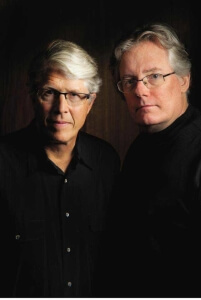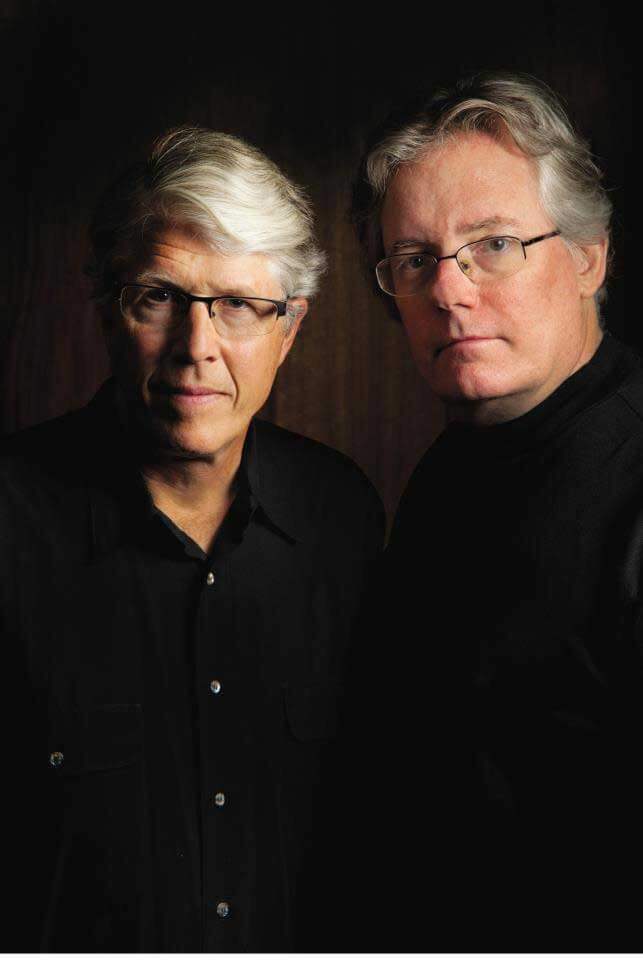He Said, He Said by Douglas Preston and Lincoln Child
 Linc: We’ve noticed over the years that certain people have a variety of preconceptions when it comes to two writers working jointly on a novel. Some think that the work is doled out in drill-sergeant fashion: Writer A does the first chapter, Writer B does the second, and so on. Forward, march! There’s a related assumption that such labor, by its very nature, must be something of a grind and not like “real” writing at all in which an artist, sitting in a lonely garret, lovingly crafts a work that is purely his own, untainted by external influences. Also, we sometimes get the sense—people are too tactful to say it outright, of course—that a jointly written novel must by its very nature be inferior: how can two separate minds craft a unified, carefully sustained creative vision?Doug: None of these assumptions match how our partnership really works. We’ve found that the best way to write together is, first, to brainstorm our novels one act at a time. Then we assign to ourselves discrete sets of chapters, subplots, or related sequences of events involving one or another character. For example, I might write an entire sequence of chapters featuring Corrie Swanson, while Linc writes the chapters from, say, a serial killer’s twisted point of view. (He’s good at that.) This way, each writer gets a cohesive section of the novel to work on. Then we swap sequences and rewrite each other—which often leads to arguments. At one time, the arguments were painful, but now we discuss things constructively. We long ago learned to check our egos at the door. If Linc tells me that something I’ve written is garbage, I have to accept his judgment … after damning him as a scoundrel and a philistine, of course. The result of this method of work is that we tend to get all four of our hands on just about every word. Another (unexpected) result is that our styles have converged, and we’ve developed a merged style that is better than what we write on our own. I’ve learned a great deal about pacing and brevity from Linc, and he learned how to write from me … That’s a joke, of course. I’m not sure what Linc has learned from me, actually.Linc: In turn, I taught Doug that Crayolas, while wonderful for drawing clouds and swing sets, weren’t necessarily better tools for the creation of novels than, say, MS Word or LibreWriter. (That’s a joke, of course … Doug.) The fact is, I actually learned a lot about developing character and humor from my writing partner. As for working jointly being a grind—far from it. We can speak from authority on this, having both written numerous solo novels as well as the joint ones. Novelists don’t often talk about it, but writing is a lonely and stressful business. Each new chapter presents you with a fork in the road, and you have to select the right turn—or you might find yourself twenty chapters later at a dead end. When Doug takes a wrong turn, I’m right there, riding shotgun, yelling at him to get back on the main road. And he does the same for me. With a functional, successful writing partnership, you always have someone to bounce ideas off of, someone to help you work through a difficult scene. It’s amazing how one of us can call the other up with a knotty problem, only to find to our delight that within minutes it has been completely resolved.
Linc: We’ve noticed over the years that certain people have a variety of preconceptions when it comes to two writers working jointly on a novel. Some think that the work is doled out in drill-sergeant fashion: Writer A does the first chapter, Writer B does the second, and so on. Forward, march! There’s a related assumption that such labor, by its very nature, must be something of a grind and not like “real” writing at all in which an artist, sitting in a lonely garret, lovingly crafts a work that is purely his own, untainted by external influences. Also, we sometimes get the sense—people are too tactful to say it outright, of course—that a jointly written novel must by its very nature be inferior: how can two separate minds craft a unified, carefully sustained creative vision?Doug: None of these assumptions match how our partnership really works. We’ve found that the best way to write together is, first, to brainstorm our novels one act at a time. Then we assign to ourselves discrete sets of chapters, subplots, or related sequences of events involving one or another character. For example, I might write an entire sequence of chapters featuring Corrie Swanson, while Linc writes the chapters from, say, a serial killer’s twisted point of view. (He’s good at that.) This way, each writer gets a cohesive section of the novel to work on. Then we swap sequences and rewrite each other—which often leads to arguments. At one time, the arguments were painful, but now we discuss things constructively. We long ago learned to check our egos at the door. If Linc tells me that something I’ve written is garbage, I have to accept his judgment … after damning him as a scoundrel and a philistine, of course. The result of this method of work is that we tend to get all four of our hands on just about every word. Another (unexpected) result is that our styles have converged, and we’ve developed a merged style that is better than what we write on our own. I’ve learned a great deal about pacing and brevity from Linc, and he learned how to write from me … That’s a joke, of course. I’m not sure what Linc has learned from me, actually.Linc: In turn, I taught Doug that Crayolas, while wonderful for drawing clouds and swing sets, weren’t necessarily better tools for the creation of novels than, say, MS Word or LibreWriter. (That’s a joke, of course … Doug.) The fact is, I actually learned a lot about developing character and humor from my writing partner. As for working jointly being a grind—far from it. We can speak from authority on this, having both written numerous solo novels as well as the joint ones. Novelists don’t often talk about it, but writing is a lonely and stressful business. Each new chapter presents you with a fork in the road, and you have to select the right turn—or you might find yourself twenty chapters later at a dead end. When Doug takes a wrong turn, I’m right there, riding shotgun, yelling at him to get back on the main road. And he does the same for me. With a functional, successful writing partnership, you always have someone to bounce ideas off of, someone to help you work through a difficult scene. It’s amazing how one of us can call the other up with a knotty problem, only to find to our delight that within minutes it has been completely resolved.
Doug: I remember in the beginning, one of our foreign publishers, thinking readers would reject a co-authored novel as being less than artistic, published us as “Lincoln Preston.” That didn’t work as well as it could have, and now we’re doing better in that particular country as Preston & Child. Not to get too defensive about this, but many great works of art are jointly created—one thinks for example of the frescoes in the Brancacci Chapel, Chartres Cathedral, the film Casablanca, and the theory of evolution (Wallace and Darwin). We believe some of the very best writing of our careers has appeared in our joint books. My ideas and chapters inspire Linc’s, and his criticism of what I write pushes me to do my own best work. With two creative minds working full-bore, we have twice as many ideas to choose from, twice as much scrutiny of what gets put down on (virtual) paper, and the result truly ends up being more than the sum of its parts. The end results are thriller novels that we hope are tightly plotted, with vivid characters and unusual settings—and that, instead of being tired retreads, continue to be fresh and surprising with each new publication.
Linc: There is a downside—and a very grave one—to a writing partnership. We have to split the royalties.
Doug: Yes. Linc is having trouble keeping up the payments on his Rolls-Royce Wraith, poor fellow.
Linc: And the occasional shortage of funds is making it difficult for Doug to maintain his increasingly, ah, Thomas De Quincey lifestyle, if you take my meaning …
###
The latest Preston & Child novel, Two Graves, was released by Grand Central Publishing in Dec. 2012.

